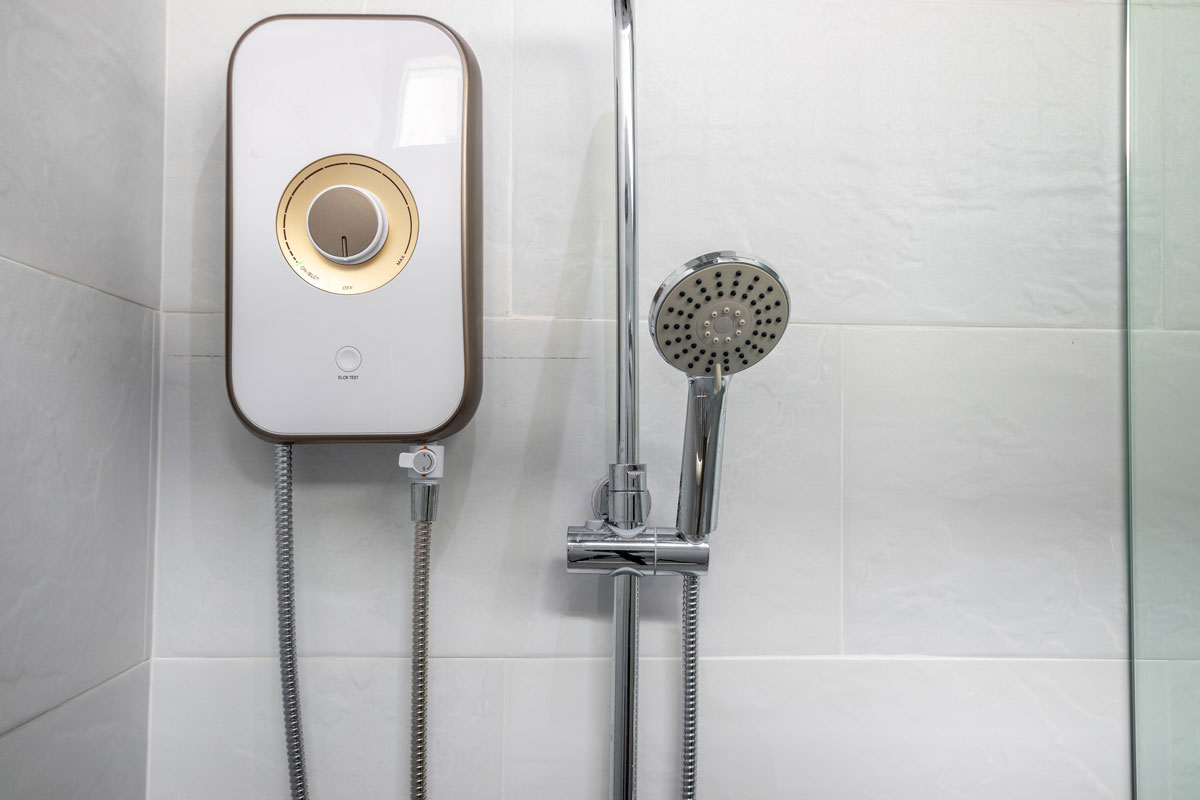Incorrect sizing of supply lines takes a long time to fill the tank, which results in hot water coming out late. If you're planning to install a water heater but are not sure what pipe size you should use then you've come to the right place. We did the research for you and here's what we've found out.
The ideal size for water heater supply lines is 3/4-inch in diameter in modern houses. On the other hand, old water heaters still use supply lines with a 1/2-inch diameter. Pipes for supply branches use a 3/4-inch diameter while pipes for individual components should use a 1/2-inch diameter.
Although the answer seems to be simple, there are still other aspects to take into account. In this post, we'll discuss the topic in greater detail so keep reading to find out more.

What To Consider When Choosing the Correct Size Of Hot Water Pipes
There are some important factors to take note of when pipework is involved. Here are some of those considerations:

Overall Cost
The amount of money you have to spend is a crucial factor to take into account when you need the correct water heater supply line. While this may ultimately be the deciding factor as you evaluate the models, bear in mind that choosing a cheap water heater pipe is rarely advantageous if the item is of low quality and requires costly maintenance over time.
Be careful to strike a balance between your financial needs and your need for a sturdy, dependable system. The price varies depending on the supply line's total length and quality. The price of a high-quality 3/4-inch supply line is more expensive than that of a high-quality 1/2-inch supply line.
Click here to see this 3/4-inch water heater connector on Amazon.
Water Pressure

It is important to look into water pressure when using a water heater. An ideal 3/4-inch water supply line fills a 55-gallon heater just in a minute or two. But, a 1/2-inch supply line fills that heater in 25 minutes.
A 3/4-inch supply line has a 20 GPM flow rate. So, when you’re running the heater and you want to fill the gallon quickly, a 3/4-inch water supply line will ensure the proper flow rate in a heater.
If you want to know more about water pressure, you can check the article "What Causes Too Much Pressure In Hot Water Heater?"
Durability
If you're considering durability for your plumbing project, you can go for copper pipes. They are considered the most durable supply lines, they resist material buildup, and can take much water pressure. Do not use a PEX water supply line, especially on hot water because it cannot handle high-temperature water.
Does The Size of The Pipe Affect Water Pressure?

The pipe size and water pressure are directly related to each other. If the pipe size increases, the water pressure decreases. And when the pipe size decreases, the pressure increases. This is because when the pipe size is narrower, its velocity increases, causing the water pressure to increase also.
On the other hand, pressure is lost as a result of flow resistance provided by a shorter pipe. Pressure rises as flow velocity rises, which causes efficiency to drop.
Which Pipe Is Best For Hot Water Supply?
Different types of materials are used to make different pipes for plumbing. They are made depending on where they will be used. The ideal choice varies based on the application and project requirements. Here are some of the water supply pipes that can be used for hot water:
Chlorinated Polyvinyl Chloride Piping (CPVC)
CPVC has a high chlorine content, which is good for hot water and drinking water. Additionally, CPVC piping is more flexible than metallic piping. It is insulated to avoid energy loss, and is fire resistant. On a negative note, this type of piping tends to split when frozen, is not recyclable, highly polluting manufacturing process, and is more expensive than PVC.
Cross-Linked Polyethylene Piping (PEX)
If CPVC does not meet your standards, maybe this next one will. One of the biggest innovations in plumbing is the Cross-Linked Polyethylene Piping or PEX. They are flexible, heat resistant, versatile, freeze-resistant, and non-conductive, making them suitable for both hot and cold water.
Click here to see this PEX pipe on Amazon.
Copper Pipes
Since the 1960s, copper has been the preferred plumbing material because of its high durability. It can be used for hot and cold drinking water supply because of its great heat tolerance. The primary disadvantage of copper pipe is its high cost, especially as it needs soldering and extra fittings. Given its worth, exposed copper piping makes for a tempting target for thieves.
Click here to see this copper pipe on Amazon.
How Can I Tell Which Water Heater Line Is Hot And Cold?

Back in the old days, the hand pump could only provide cold water when indoor plumbing was initially introduced. With the growing need for warm water especially when taking a shower early in the morning, water heaters were introduced. They put the cold water on the right side because most people are right-handed and cold water is used more frequently than warm water.
So, if you're unsure as to which side of a water heater line is hot or cold, remember that in the North American standard, the left side is always hot while the right side is always cold.
Tips To Keep Your Water Heater Working Perfectly
Now that you’ve determined the right size to use for your hot water pipes, extending its life expectancy is the next concern. Here are some of the helpful tips that you can follow to keep it in top working order:
1. Clear The Area Around The Water Heater
Give your water heater sufficient room so that it may operate without hindrance and that you can access it when necessary. This will also give technicians enough space to wriggle around when checking the water heater parts. If there is no sufficient space, it will be harder for them to service or repair it.
2. Turn Off The Water Heater
Teach yourself to shut off the water heater when necessary. Modern water heaters heat the water within 5 minutes. It makes more sense to turn on the geyser 5 minutes before you need it rather than 30 minutes in advance because prolonged use will shorten the lifespan of the device.
3. Proper Temperature Setting
Setting up the right temperature on your water heater supply will save you from a high electricity cost. The right temperature means the heater will have to work less and will be beneficial for the device. Any lower and you run the risk of your water system getting harmful bacteria, any higher and there is a serious risk of burning.
4. Check For Leaks
A hot water tank leak might result in expensive water damage and higher electricity costs. Check it frequently because even the smallest leak can cause a lot of problems.
5. Annual Maintenance
Last but not the least, if you don't have any experience in checking hot water supply or are not as confident as you can be then better check with an expert on this. If you're unsure, or notice issues such as leaking or malfunctioning parts, you need to call in a professional plumber. After all, the earlier you identify the problem, the easier it will be to fix.
Final Thoughts

The correct plumbing pipe for a project can be difficult to choose because of the large range of available pipeline materials. There are factors to consider in choosing the right size for your hot water pipe. But a ¾ inches diameter supply line is the best option for a water heater. It ensures the water flow rate and fills the gallon quickly.
Before you go, be sure to check out these other posts:



